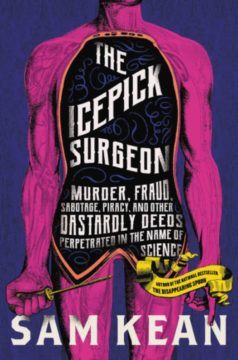Elizabeth Svoboda in Undark:
 Walter Freeman was itching for a shortcut. Since the 1930s, the Washington, D.C. neurologist had been drilling through the skulls of psychiatric patients to scoop out brain chunks in the hopes of calming their mental torment. But Freeman decided he wanted something simpler than a bone drill — he wanted a rod-like implement that could pass directly through the eye socket to penetrate the brain. He’d then swirl the rod around to scramble the patient’s frontal lobes, the brain regions that control higher-level thinking and judgment.
Walter Freeman was itching for a shortcut. Since the 1930s, the Washington, D.C. neurologist had been drilling through the skulls of psychiatric patients to scoop out brain chunks in the hopes of calming their mental torment. But Freeman decided he wanted something simpler than a bone drill — he wanted a rod-like implement that could pass directly through the eye socket to penetrate the brain. He’d then swirl the rod around to scramble the patient’s frontal lobes, the brain regions that control higher-level thinking and judgment.
Rummaging in his kitchen drawer, Freeman found the perfect tool: a sharp pick of the sort used to shear ice from large blocks. He knew his close colleague, surgeon James Watts, wouldn’t sanction his new approach, so he closed the office door and did his “ice-pick lobotomies” — more formally, transorbital lobotomies — without Watts’ knowledge.
Though the amoral scientist has been a familiar trope since Victor Frankenstein, we seldom consider what sets these technicians on the path to iniquity. Journalist Sam Kean’s “The Icepick Surgeon: Murder, Fraud, Sabotage, Piracy, and Other Dastardly Deeds Perpetrated in the Name of Science,” helps fill that void, describing how dozens of promising scientists broke bad throughout history — and arguing that the better we understand their moral decay, the more prepared we’ll be to quash the next Freeman.
More here.
